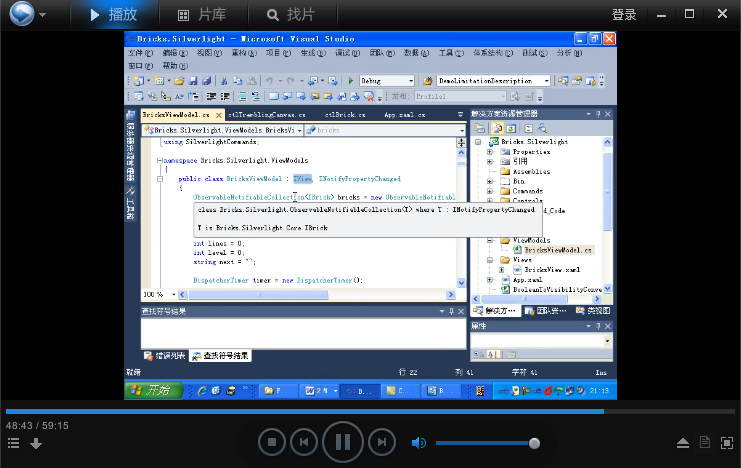Windows中應用C#為文件夾和文件編寫暗碼鎖的示例分享。本站提示廣大學習愛好者:(Windows中應用C#為文件夾和文件編寫暗碼鎖的示例分享)文章只能為提供參考,不一定能成為您想要的結果。以下是Windows中應用C#為文件夾和文件編寫暗碼鎖的示例分享正文
C#文件夾加鎖小對象
用C#說話完成一個文件夾鎖的法式,網上相似的“xxx文件夾xxx”軟件許多,然則根本上都是C/C++說話完成的,且都沒有供給源碼(這個可以懂得,究竟是加密法式,不該該洩漏源碼)。
法式的根本道理是:用C#說話重定名文件夾,經由過程重定名使之成為windows平安文件的類標識符。詳細的辦法是為文件夾添加拓展名“.{2559a1f2-21d7-11d4-bdaf-00c04f60b9f0}”
(.{2559a1f2-21d7-11d4-bdaf-00c04f60b9f0}是windows平安文件的類標識符),這時候文件夾的圖標就會釀成一把鎖,如許文件夾就被加鎖了。
法式的主界面異常簡練,截圖以下:
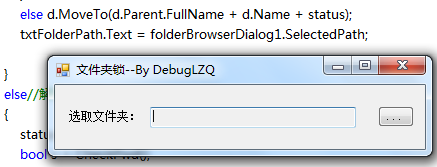
法式中加密解密文件夾的焦點代碼以下:
private void btnBrowseFolder_Click(object sender, EventArgs e)
{
status = lockType;//
if (folderBrowserDialog1.ShowDialog() == DialogResult.OK)
{
DirectoryInfo d = new DirectoryInfo(folderBrowserDialog1.SelectedPath);
string selectedpath = d.Parent.FullName + d.Name;
if (folderBrowserDialog1.SelectedPath.LastIndexOf(".{") == -1)//經由過程文件夾稱號,斷定加密
{
SetPwd(folderBrowserDialog1.SelectedPath);
if (!d.Root.Equals(d.Parent.FullName))
{
d.MoveTo(d.Parent.FullName + "\\" + d.Name + status);//文件夾重定名
}
else d.MoveTo(d.Parent.FullName + d.Name + status);
txtFolderPath.Text = folderBrowserDialog1.SelectedPath;
}
else//解密文件夾
{
status = GetStatus(status);
bool s = CheckPwd();
if (s)
{
File.Delete(folderBrowserDialog1.SelectedPath + "\\key.xml");
string path = folderBrowserDialog1.SelectedPath.Substring(0, folderBrowserDialog1.SelectedPath.LastIndexOf("."));
d.MoveTo(path);
txtFolderPath.Text = path;
}
}
}
}
法式的運轉後果以下:
以加密D盤上面的test文件夾為例,成果以下:
起首經由過程folderBrowserDialog選擇響應的文件夾
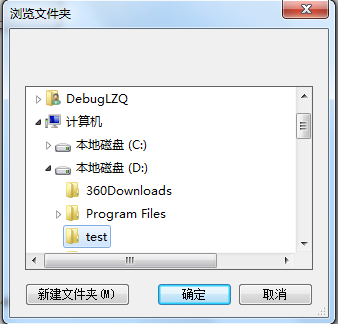
輸出暗碼,加鎖
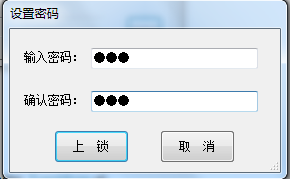
後果以下:
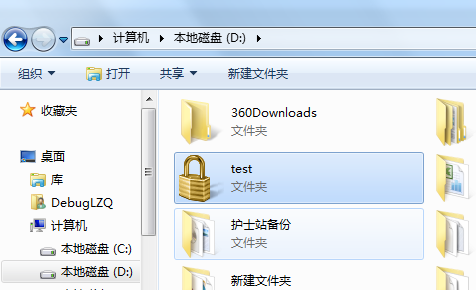
此時雙擊文件夾曾經沒法翻開。
選擇加密後的test文件夾,輸出加密時輸出的暗碼,可解鎖。
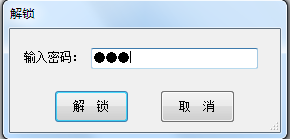
test文件夾曾經解密
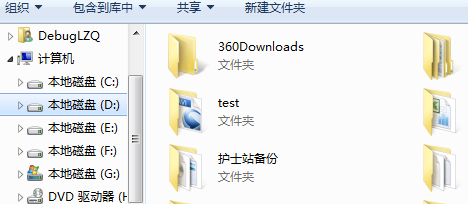
加密解密文件小對象
下面分享了一個文件夾加密小對象,該對象是操作文件夾稱號的辦法完成文件夾的普通加密,文件夾中的文件(視頻、圖片等)都原封不動的保留在那邊。
在網上搜刮相干文件加密的法式,發明給出的根本都是針對“字符創”、“文本”的加密與解密。對視頻文件、圖片等普通文件的加密解密法式少之又少,所以我們上面再來完成一個對普通文件停止加密的小對象。
法式的重要功效是:用戶經由過程文件選擇框選摘要加密的文件-》輸出暗碼停止加密;選擇加密後的文件,輸出暗碼停止解密。
法式的主界面以下:
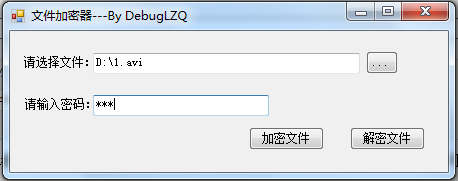
三個按鈕的Click事宜處置法式以下:
private void btnSelectFile_Click(object sender, EventArgs e)
{
if (openFileDialog1.ShowDialog() == System.Windows.Forms.DialogResult.OK)
{
txtFileName.Text = openFileDialog1.FileName ;
}
}
private void btnEncryptFile_Click(object sender, EventArgs e)
{
string inFile=txtFileName.Text;
string outFile = inFile + ".dat";
string password=txtPassword.Text ;
DESFile.DESFileClass.EncryptFile(inFile, outFile, password);//加密文件
//刪除加密前的文件
File.Delete(inFile);
txtFileName.Text = string.Empty;
MessageBox.Show("加密勝利");
}
private void btnDecryptFile_Click(object sender, EventArgs e)
{
string inFile = txtFileName.Text;
string outFile = inFile.Substring(0,inFile.Length - 4);
string password = txtPassword.Text;
DESFile.DESFileClass.DecryptFile (inFile, outFile, password);//解密文件
//刪除解密前的文件
File.Delete(inFile);
txtFileName.Text = string.Empty;
MessageBox.Show("解密勝利");
}
加密解密的Help文件源碼以下:
using System;
using System.Collections.Generic;
using System.Text;
using System.Security.Cryptography;
using System.IO;
namespace DESFile
{
/// <summary>
/// 異常處置類
/// </summary>
public class CryptoHelpException : ApplicationException
{
public CryptoHelpException(string msg) : base(msg) { }
}
/// <summary>
/// CryptHelp
/// </summary>
public class DESFileClass
{
private const ulong FC_TAG = 0xFC010203040506CF;
private const int BUFFER_SIZE = 128 * 1024;
/// <summary>
/// 磨練兩個Byte數組能否雷同
/// </summary>
/// <param name="b1">Byte數組</param>
/// <param name="b2">Byte數組</param>
/// <returns>true-相等</returns>
private static bool CheckByteArrays(byte[] b1, byte[] b2)
{
if (b1.Length == b2.Length)
{
for (int i = 0; i < b1.Length; ++i)
{
if (b1[i] != b2[i])
return false;
}
return true;
}
return false;
}
/// <summary>
/// 創立DebugLZQ ,http://www.cnblogs.com/DebugLZQ
/// </summary>
/// <param name="password">暗碼</param>
/// <param name="salt"></param>
/// <returns>加密對象</returns>
private static SymmetricAlgorithm CreateRijndael(string password, byte[] salt)
{
PasswordDeriveBytes pdb = new PasswordDeriveBytes(password, salt, "SHA256", 1000);
SymmetricAlgorithm sma = Rijndael.Create();
sma.KeySize = 256;
sma.Key = pdb.GetBytes(32);
sma.Padding = PaddingMode.PKCS7;
return sma;
}
/// <summary>
/// 加密文件隨機數生成
/// </summary>
private static RandomNumberGenerator rand = new RNGCryptoServiceProvider();
/// <summary>
/// 生成指定長度的隨機Byte數組
/// </summary>
/// <param name="count">Byte數組長度</param>
/// <returns>隨機Byte數組</returns>
private static byte[] GenerateRandomBytes(int count)
{
byte[] bytes = new byte[count];
rand.GetBytes(bytes);
return bytes;
}
/// <summary>
/// 加密文件
/// </summary>
/// <param name="inFile">待加密文件</param>
/// <param name="outFile">加密後輸出文件</param>
/// <param name="password">加密暗碼</param>
public static void EncryptFile(string inFile, string outFile, string password)
{
using (FileStream fin = File.OpenRead(inFile),
fout = File.OpenWrite(outFile))
{
long lSize = fin.Length; // 輸出文件長度
int size = (int)lSize;
byte[] bytes = new byte[BUFFER_SIZE]; // 緩存
int read = -1; // 輸出文件讀取數目
int value = 0;
// 獲得IV和salt
byte[] IV = GenerateRandomBytes(16);
byte[] salt = GenerateRandomBytes(16);
// 創立加密對象
SymmetricAlgorithm sma = DESFileClass.CreateRijndael(password, salt);
sma.IV = IV;
// 在輸入文件開端部門寫入IV和salt
fout.Write(IV, 0, IV.Length);
fout.Write(salt, 0, salt.Length);
// 創立散列加密
HashAlgorithm hasher = SHA256.Create();
using (CryptoStream cout = new CryptoStream(fout, sma.CreateEncryptor(), CryptoStreamMode.Write),
chash = new CryptoStream(Stream.Null, hasher, CryptoStreamMode.Write))
{
BinaryWriter bw = new BinaryWriter(cout);
bw.Write(lSize);
bw.Write(FC_TAG);
// 讀寫字節塊到加密流緩沖區
while ((read = fin.Read(bytes, 0, bytes.Length)) != 0)
{
cout.Write(bytes, 0, read);
chash.Write(bytes, 0, read);
value += read;
}
// 封閉加密流
chash.Flush();
chash.Close();
// 讀取散列
byte[] hash = hasher.Hash;
// 輸出文件寫入散列
cout.Write(hash, 0, hash.Length);
// 封閉文件流
cout.Flush();
cout.Close();
}
}
}
/// <summary>
/// 解密文件
/// </summary>
/// <param name="inFile">待解密文件</param>
/// <param name="outFile">解密後輸入文件</param>
/// <param name="password">解密暗碼</param>
public static void DecryptFile(string inFile, string outFile, string password)
{
// 創立翻開文件流
using (FileStream fin = File.OpenRead(inFile),
fout = File.OpenWrite(outFile))
{
int size = (int)fin.Length;
byte[] bytes = new byte[BUFFER_SIZE];
int read = -1;
int value = 0;
int outValue = 0;
byte[] IV = new byte[16];
fin.Read(IV, 0, 16);
byte[] salt = new byte[16];
fin.Read(salt, 0, 16);
SymmetricAlgorithm sma = DESFileClass.CreateRijndael(password, salt);
sma.IV = IV;
value = 32;
long lSize = -1;
// 創立散列對象, 校驗文件
HashAlgorithm hasher = SHA256.Create();
using (CryptoStream cin = new CryptoStream(fin, sma.CreateDecryptor(), CryptoStreamMode.Read),
chash = new CryptoStream(Stream.Null, hasher, CryptoStreamMode.Write))
{
// 讀取文件長度
BinaryReader br = new BinaryReader(cin);
lSize = br.ReadInt64();
ulong tag = br.ReadUInt64();
if (FC_TAG != tag)
throw new CryptoHelpException("文件被損壞");
long numReads = lSize / BUFFER_SIZE;
long slack = (long)lSize % BUFFER_SIZE;
for (int i = 0; i < numReads; ++i)
{
read = cin.Read(bytes, 0, bytes.Length);
fout.Write(bytes, 0, read);
chash.Write(bytes, 0, read);
value += read;
outValue += read;
}
if (slack > 0)
{
read = cin.Read(bytes, 0, (int)slack);
fout.Write(bytes, 0, read);
chash.Write(bytes, 0, read);
value += read;
outValue += read;
}
chash.Flush();
chash.Close();
fout.Flush();
fout.Close();
byte[] curHash = hasher.Hash;
// 獲得比擬和舊的散列對象
byte[] oldHash = new byte[hasher.HashSize / 8];
read = cin.Read(oldHash, 0, oldHash.Length);
if ((oldHash.Length != read) || (!CheckByteArrays(oldHash, curHash)))
throw new CryptoHelpException("文件被損壞");
}
if (outValue != lSize)
throw new CryptoHelpException("文件年夜小不婚配");
}
}
}
}
加密/解密成果:
以加密D盤下的1.avi為例,加密後的文件為1.avi.dat,即便重定名回1.avi文件仍然沒法翻開(文件被加密)。
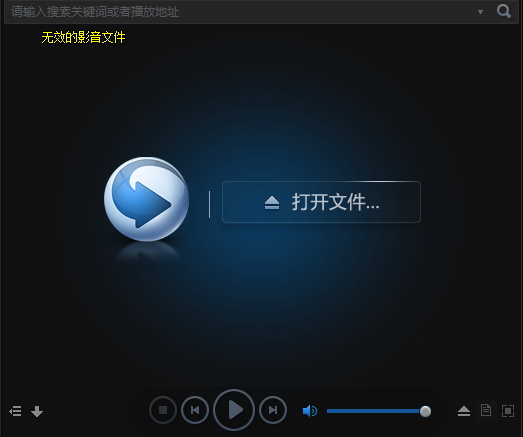
輸出暗碼停止解密後,文件恢復解密,可以順遂翻開~
